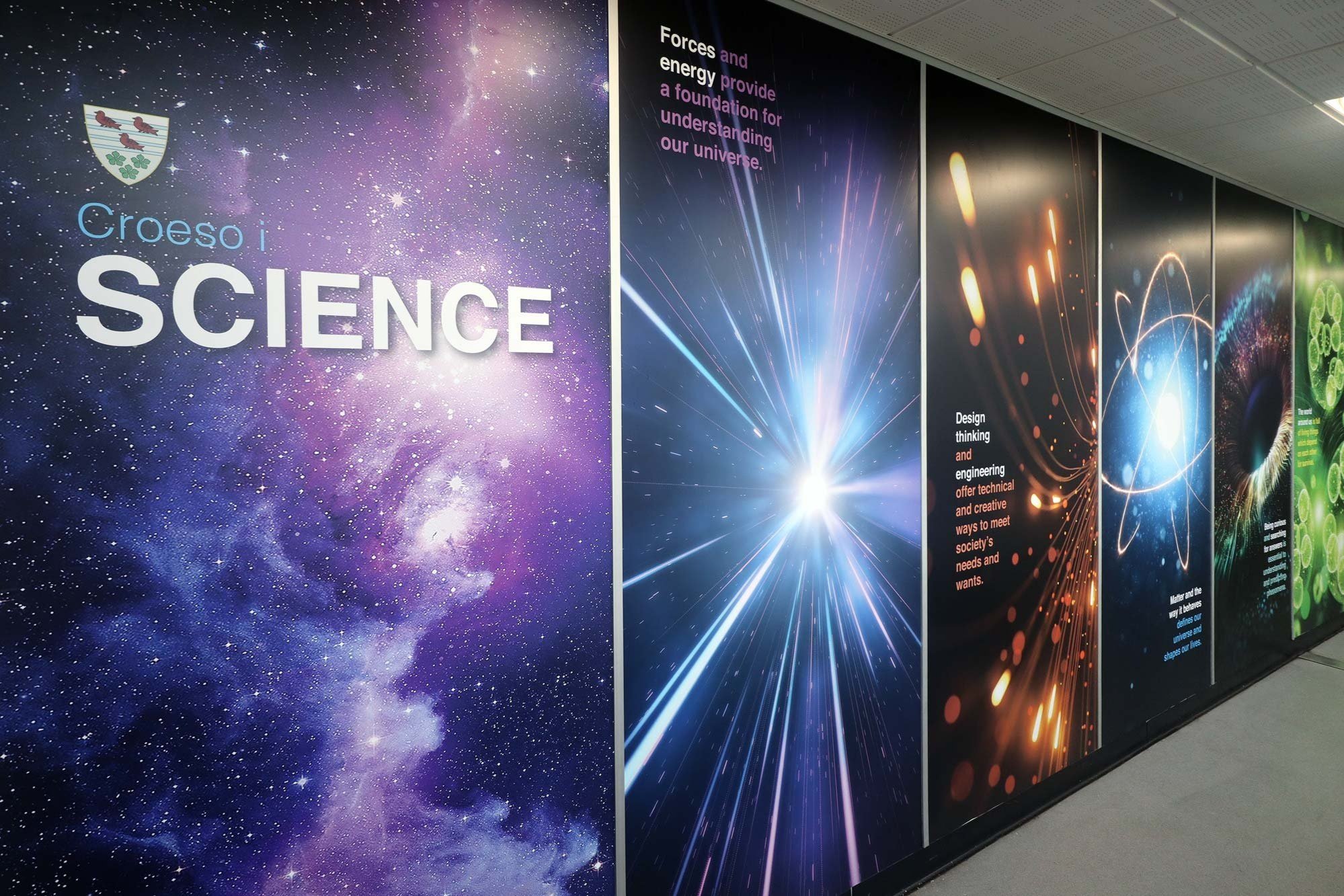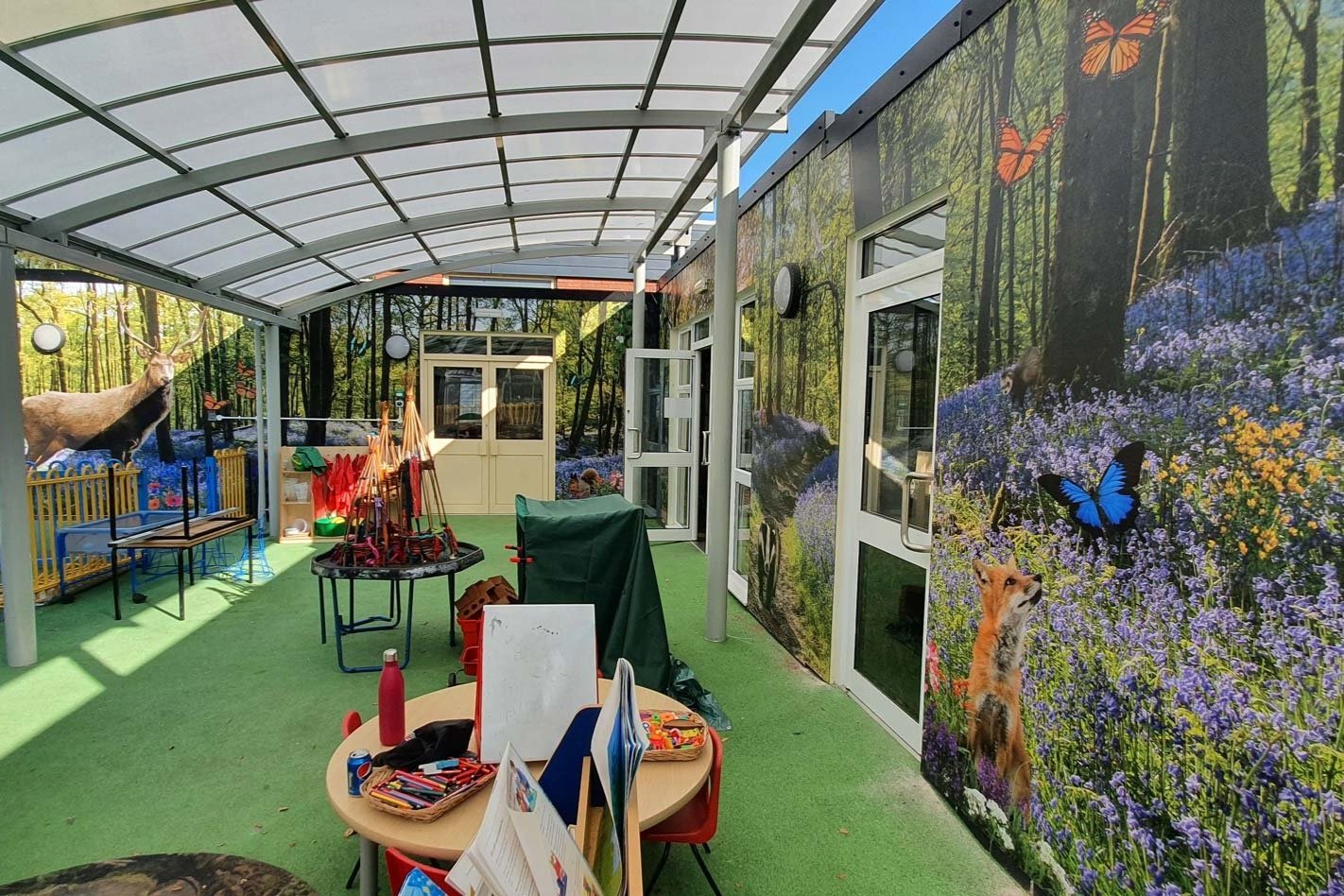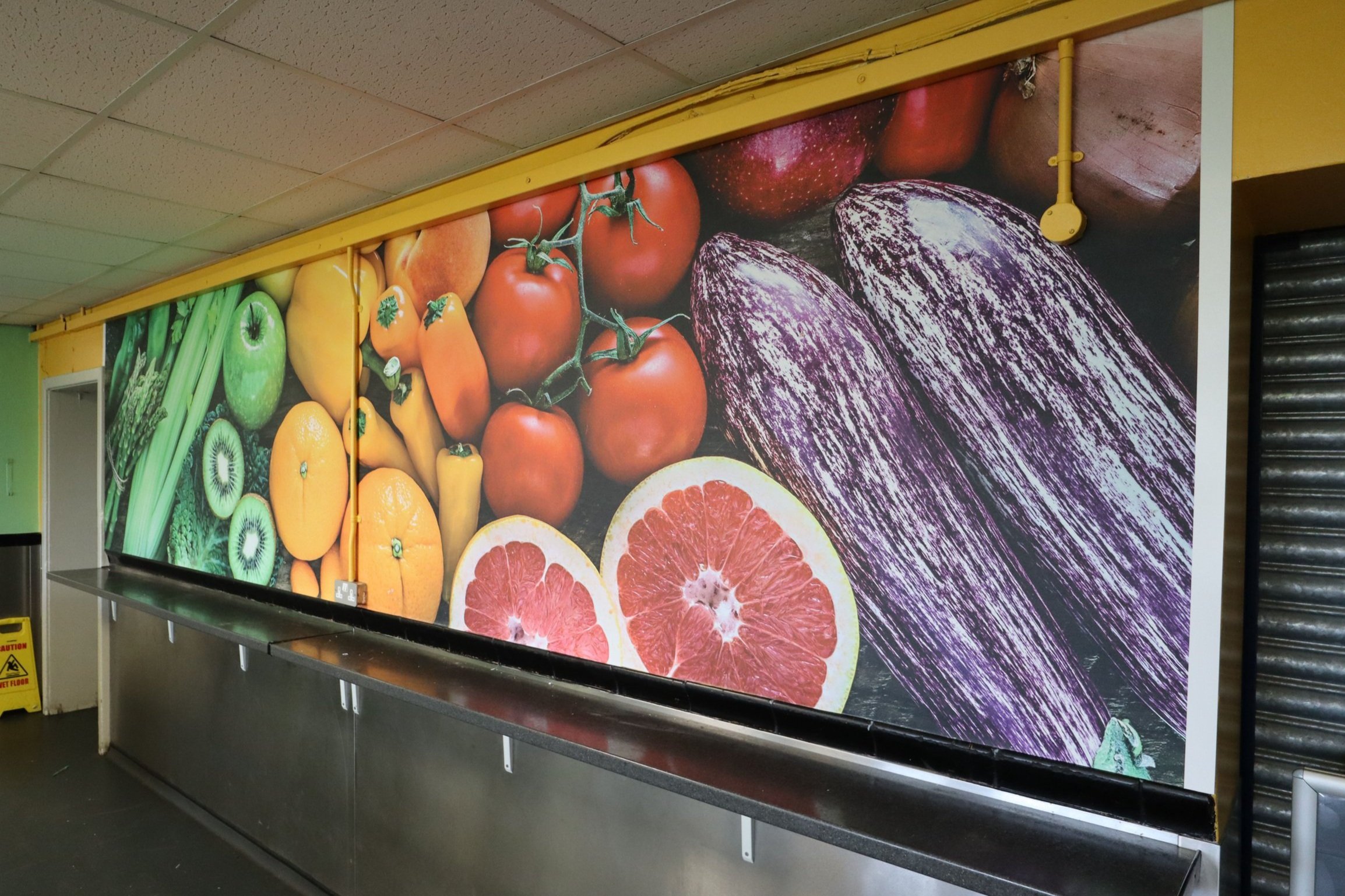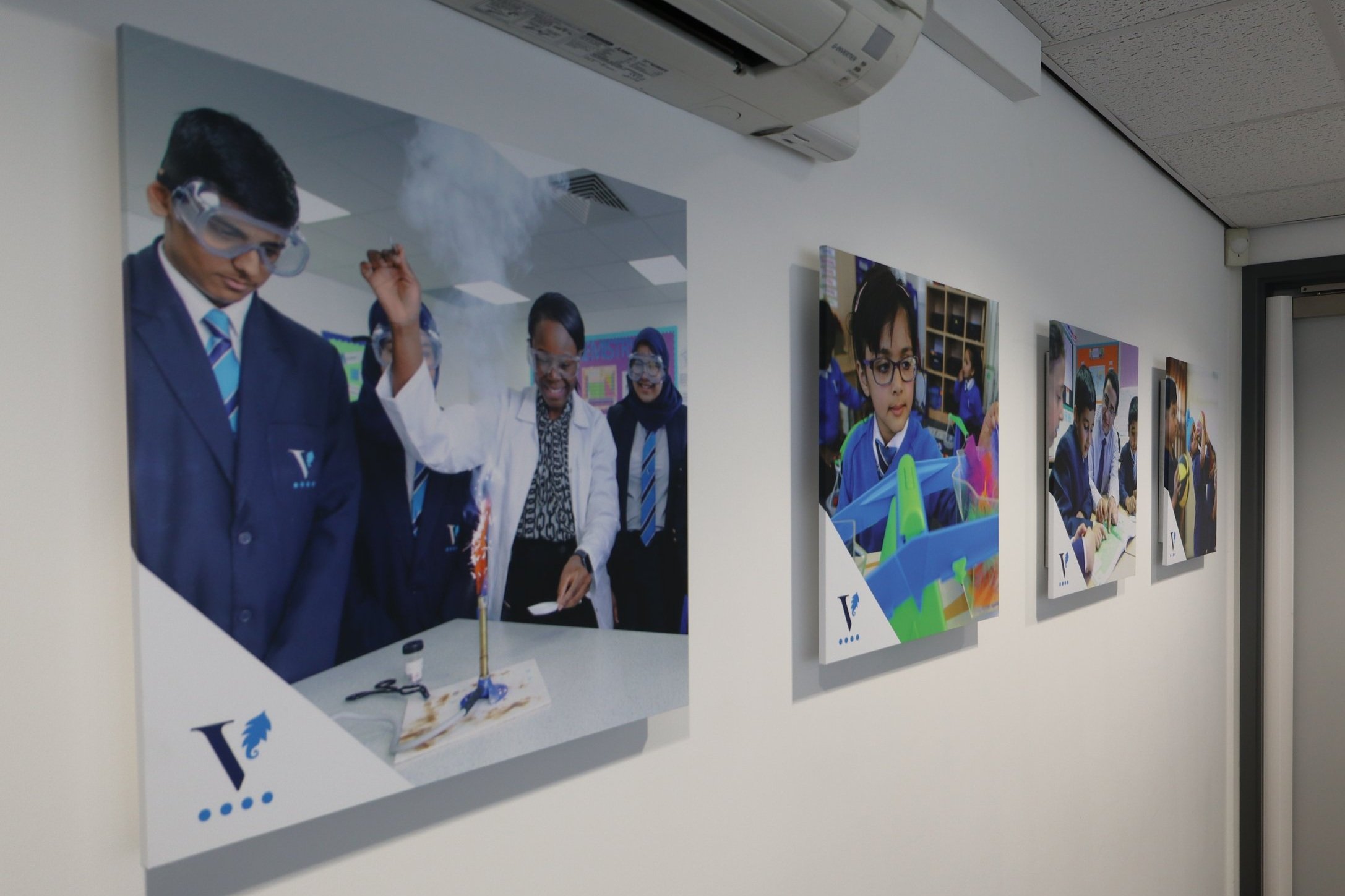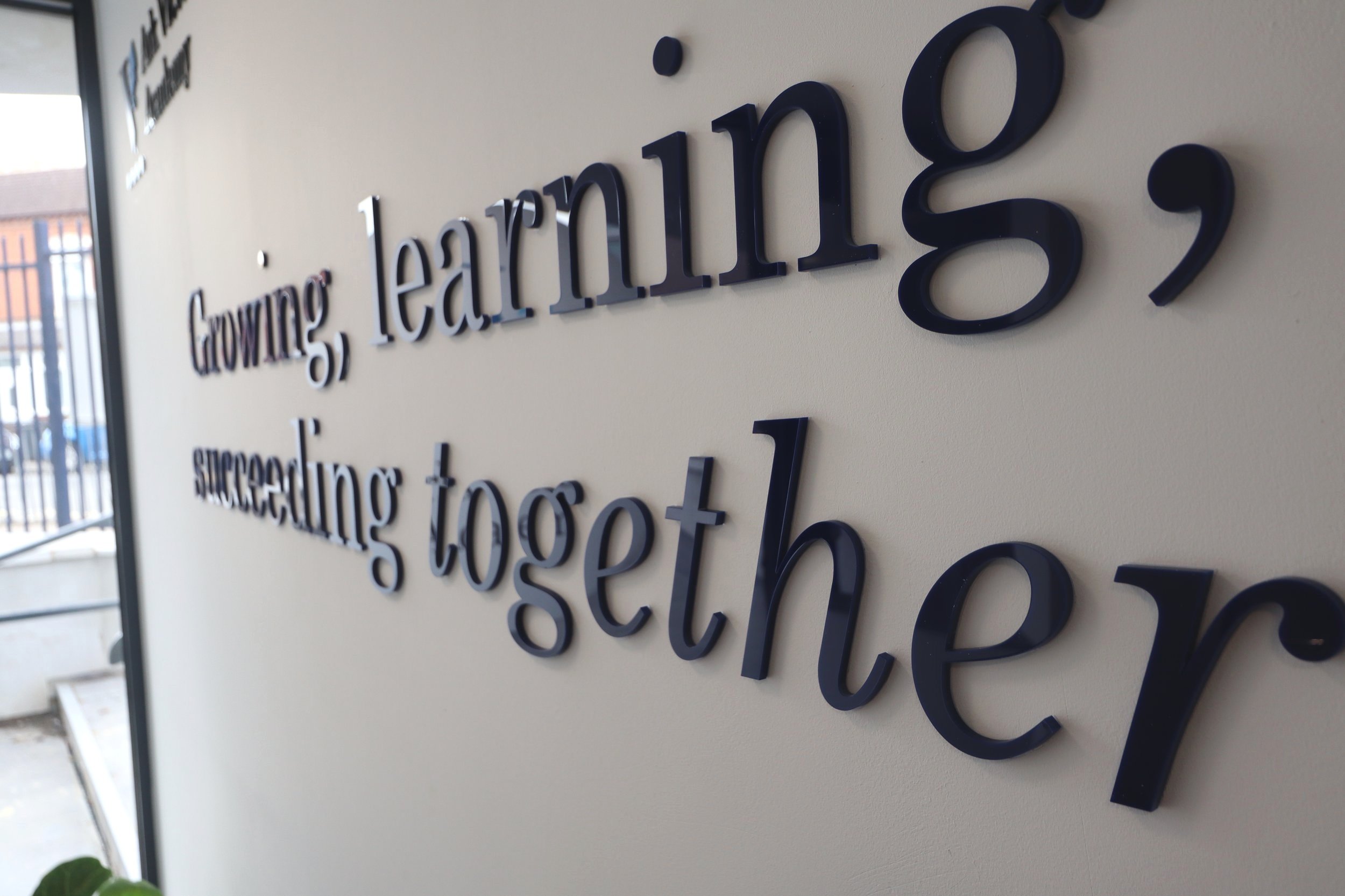More than aesthetics.
Looking at the importance of design and why it matters.
Especially in a learning environment.
The laboratory corridors of the University of Chichester with a Wonderwall installation.
I think we can all agree that our school years are our most formative years, so keeping that in mind, we present the question “why should we invest money into decorating when there are so many other things that money could be spent on?”
Simply put, aesthetics can make or break a space, and schools, colleges and universities are no exception.
If you want to increase your student's success or well-being, you can go a long way by improving the aesthetics of the school.
“Design is what links creativity and innovation.”
To better understand the importance of design, it’s helpful to step into our imaginative brain for a moment and reflect on how we feel when the weather is gloomy, vs. how we feel when the sun is shining.
How do you feel when your space is a mess, compared to how you feel once you’ve had a tidy up?
WHAT ABOUT WHEN SOMEONE SENDS YOU A MESSAGE IN ALL CAPITAL LETTERS?
All this to say that we are, in some ways, different people depending on what’s in front of our eyes, and all these things provide examples of emotional responses that are triggered by visuals.
How does this relate to learning environments?’
Aesthetic environments are not just about making things look pretty - they also impact our emotions and behaviour. For example, if you provide an aesthetic environment that makes people feel happy to be there, they will be better positioned mentally and emotionally to learn.
In this way, you can impact their progress and success, which creates a positive attitude to learning. In fact, for some children, it can be the key to getting them through the door, even if school is not necessarily a place they want to be.
Chivenor School with a Wall Graphic depicting iconic structures within London.
The same goes for parents, too. If you are looking to increase parental engagement, improving the visuals within the school can be a great place to start. This can have a notable impact on parents’ willingness to visit, get involved and support students in learning.
A step in the right direction.
In developmental psychology, there is evidence that children build up cognitive maps. In these models, children are considered to be more dependent on functional definitions of places (eg, ‘the road to the sweet shop’) and so they learn more about their surroundings through functional use rather than mere observation.
This idea has been applied to signage in educational contexts in a limited way and suggests that signage may be required because other design elements are inadequate.
This is one area in which our design services provide the option of developing clever and creative solutions for wayfinding within your school.
Studies have suggested that buildings can be planned to be more navigable by making use of salient features and landmarks, as well as having high levels of differentiation between different parts.
This allows people to navigate buildings more easily through the use of design elements that trigger areas within the ‘mental maps’ established in children during the development phase.
Globally, education providers are getting in on the movement to create more engaging and stimulating schools, with those that having engaged students in their environment have seen an improvement in student enjoyment, motivation, engagement, and achievement.
Are you next?
We feel extremely proud and privileged that The Media Collective is at the forefront of this kind of change, both in the United Kingdom and further afield, with our work being commissioned as far as Dubai and Portugal.
We have helped countless schools completely transform, and we are really appreciative of being acknowledged as a key player in the ongoing success of these institutes and their students.
As always, we welcome any opportunities to speak regarding the best services for your premises and offer several means of conducting an initial, obligation-free consultation.
Sources: Higgins, Steven & Hall, Elaine & Wall, Kate & Woolner, Pam & McCaughey, C. (2005). The Impact of School Environments: A Literature Review. The Centre for Learning and Teaching-School Education, Communication and Language Science. University of Newcastle.




